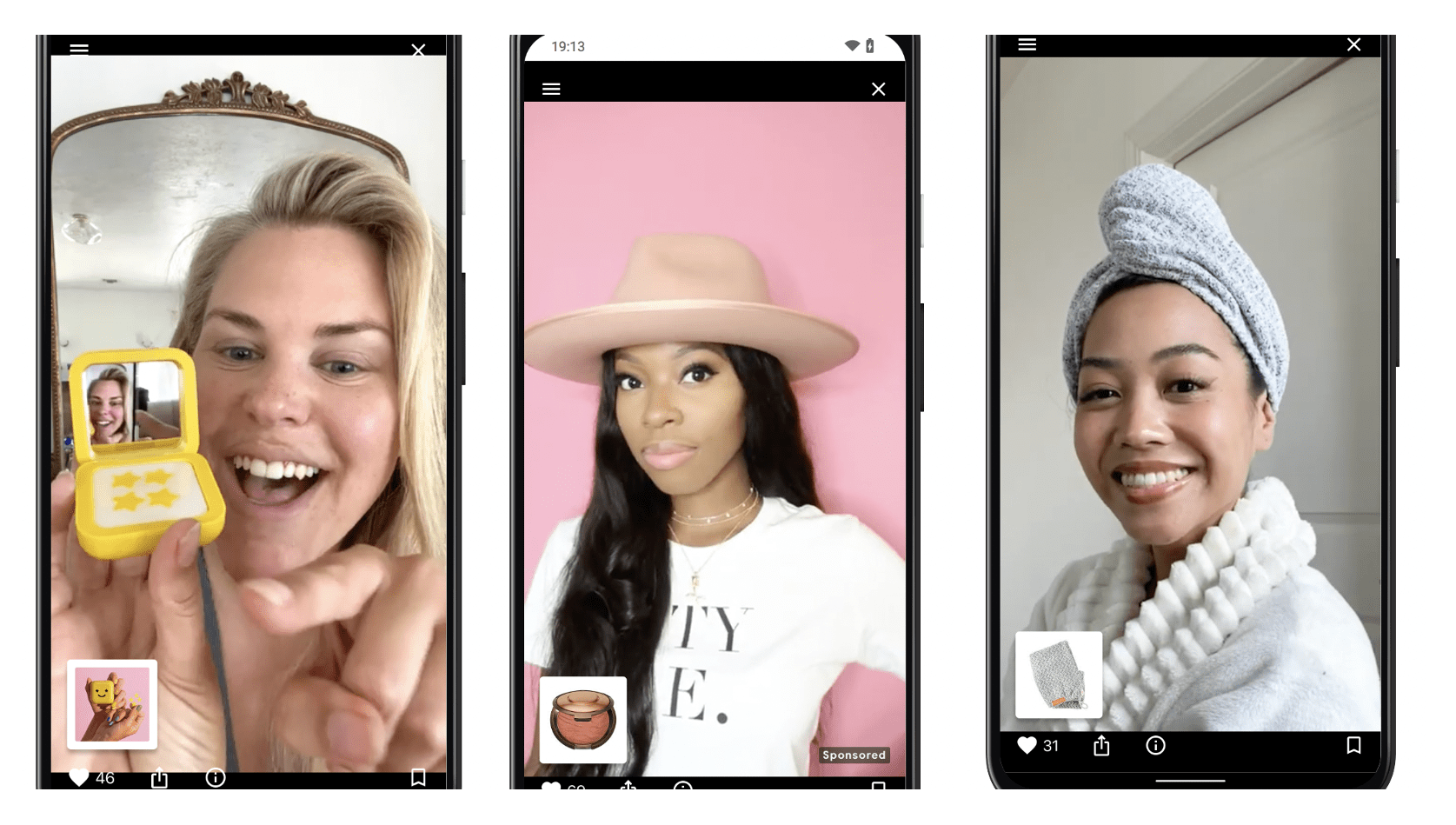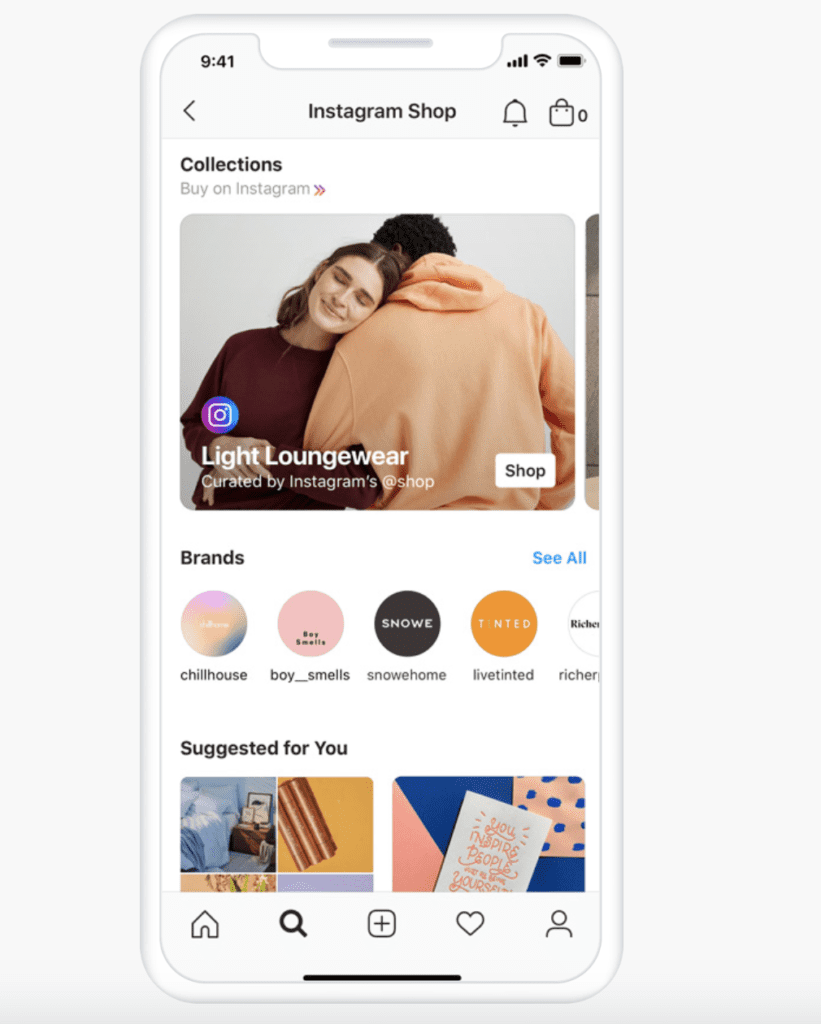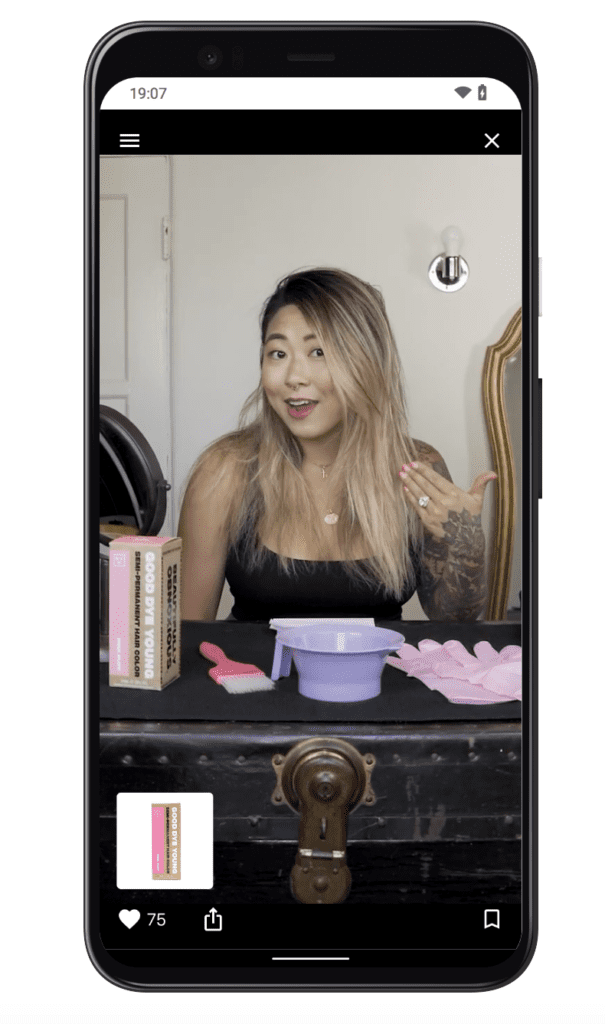One of the big stories of 2020 is, of course, the surge in people going online. It’s not just that people are spending more time online watching movies and connecting on social media. They’re also making purchases: as consumer behavior moves online, we’re seeing a surge in eCommerce. As reported in Forbes, the latest research suggests that COVID-19 has accelerated the progress of ecommerce adoption by four to six years—within a matter of months. What does that mean for your brand? A look at what the tech giants are doing provides some clues:
Instagram Shop
Instagram is embracing the online shopping trends with its July roll out, in the United States, of Instagram Shop. The online shopping feature allows consumers to view products on Instagram: personalized recommendations drawn from brands you as a consumer follow, plus recommendations suggested by Instagram’s @shop team.
Businesses can also add hashtags to product descriptions to make those products more likely to be featured. On Instagram Shop, shoppers can save items of interest, contact businesses, and place orders directly using Facebook Pay. In short, the feature allows brands to set up a single online store consumers can access via Instagram. Instagram Shop is set to go global in coming weeks.
Google’s Shoploop
Meanwhile, Google is making its own bid to snag the attention of online shoppers with its video shopping platform, Shoploop. Introduced by Google’s experimental Area 120 division, Shoploop spotlights products in short videos of 90 seconds or less. The videos illustrate how to use the product, and interested shoppers can make purchases online, directly from the app. They can also like, share, and save videos.
As reported in MediaPost, Shoploop “helps brands get product reviews from real people who know and use the products.” One of the beauties of Shoploop is that it streamlines a process that used to involve several apps or websites. Consumers can now discover products, see how they are used in real life, and make a purchase—all in one place. Currently, most Shoploop clips highlight skincare and makeup, but plans are already underway to expand reach to products including clothing, jewelry, and electronics.
What This Means for Brands
Store closures/state lockdowns during COVID-19 undoubtably spurred development of shopping experiences like Instagram Shop and Shoploop. But there’s a good chance that consumer habits formed during lockdown will persist indefinitely. “We are seeing signs that online purchasing trends formed during the pandemic may see permanent adoption,” notes Taylor Schreiner, Director, Adobe Digital Insights, in the Forbes article cited above.
And because companies like Google and Instagram are making it even easier for people to buy things online by giving them more access points, shoppers will have more reasons than ever to continue those habits forged during the pandemic. The headline for advertisers is this: online advertising not only creates visibility for a brand, it is becoming an increasingly important, even mandatory, strategy for brands to draw shoppers directly to their commerce engines.
The Challenge for Advertisers
The challenge for advertisers is to capitalize on all these access points, while understanding what types of advertising work best to attract engagement online. That is, what kind of ads does a brand now need to create in order to draw shoppers to their Instagram page, as opposed to their website? How should a business build an advertising presence on Instagram that complements the organic content it posts, especially for brands that sell products on Instagram? Different access points can mean different audiences: online ads will not necessarily all be the same.
Contact True Interactive
Need help navigating these new opportunities? Contact us. We can help.


